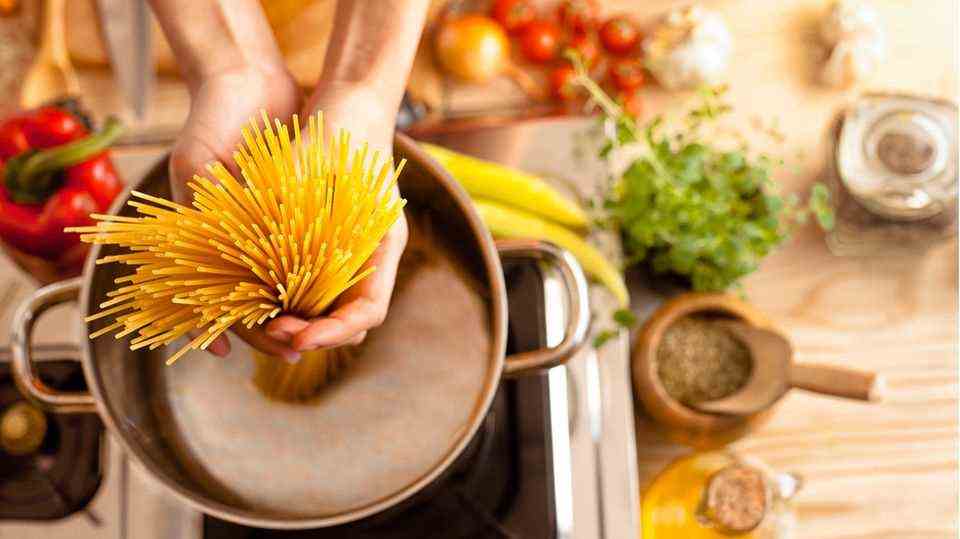“Threads of God”
The “Su Filindeu” is probably the rarest noodle in the world – and will soon be history
Paola Abraini has mastered the art of making the rare “threads of God”.
© antonellafrancello (Screenshot/Instagram)
No pasta in the world is as tricky and time-consuming to make as the Sardinian “Su Filindeu”. Only a few people have mastered the art. The rare noodle could soon disappear completely from the culinary map.
Spaghetti, farfalle, rigatoni – there are pasta long, wide, with a hole, filled, curled. Countless varieties are known. But there is one that hardly anyone knows. She calls herself “Su Filindeu”, which translates as “threads of God”, comes from Sardinia and is in danger of disappearing. Only a few people left in the world have mastered the art of making these special noodles.
The making of the “threads of God” is one of the best kept secrets in the pasta world. The recipe and method of preparation are passed down exclusively orally from one generation to the next – and have been for around 300 years. However, the secrecy is not without consequences. Hardly anyone else has mastered the complicated procedure. There are said to be only three people left in Sardinia who are good at pulling threads. If they die, the threads of God threaten to disappear from the culinary scene.
Filigree threads of dough
“Su Filindeu” are wafer-thin noodles, barely thicker than a hair. They are made from just four ingredients: semolina flour, water, salt and patience. The dough is formed into a cylinder and then stretched out in the air with the fingers of both hands, folded and pulled again and again. Every time you fold and pull, more strands of dough are created until they end up becoming filigree threads. This requires a sure instinct and a lot of practice. This once drove the British celebrity chef Jamie Oliver to despair.
On a trip to Sardinia he visited Paola Abraini. The 66-year-old from Nuoro, her niece and her mother-in-law are the last people who still know how to prepare the “threads of God” locally. Paola is committed to ensuring that there will be more. In return, she is willing to break an unwritten law and teach people outside the family. The celebrity chef dared the experiment, after all he said he had 20 years of experience making pasta – and failed. The dough tore and tore.
But if it works and the dough has been transformed into wafer-thin threads, these are stretched in three layers crosswise over a round wooden board until a dense network is formed. The pasta is dried under the hot Sardinian sun. After that, the noodles are broken into size.

Threatened with extinction
The “Su Filindeu” is a lover’s pasta. Even big names have noticed that the rare pasta is something very special. Years ago, Barilla sent emissaries to Paola. The company wanted to find out whether the noodle could also be made by machine. The attempt failed. “This is one of the foods most at risk of extinction, in large part because it’s one of the most difficult pastas out there,” Raffaella Ponzio of Slow Food International told the BBC. She is the chief coordinator of the “Ark of Taste” project, which is dedicated to preserving culinary traditions. Meanwhile, the “Su Filindeu” is listed on their list of endangered foods.
The “threads of God” are not everyday food in Sardinia. They are only served on special occasions and traditionally only twice a year at pilgrimage festivals. Once in May and once in October, the experienced pasta makers get to work to put the pasta on the plate. Originally they were prepared to feed the pilgrims who come to San Francesco di Lula, not far from Nuoro, on these days. The pasta is served in sheep’s stock and with grated pecorino cheese.

